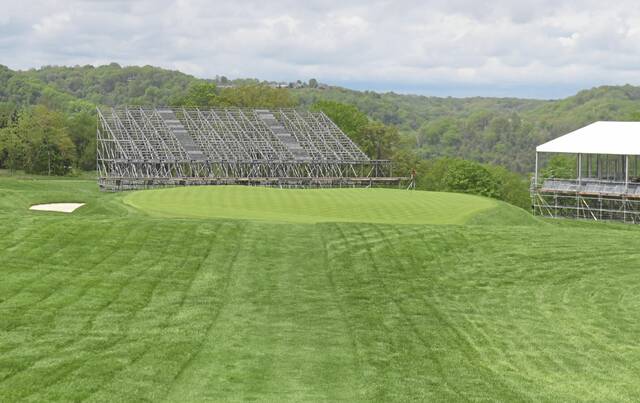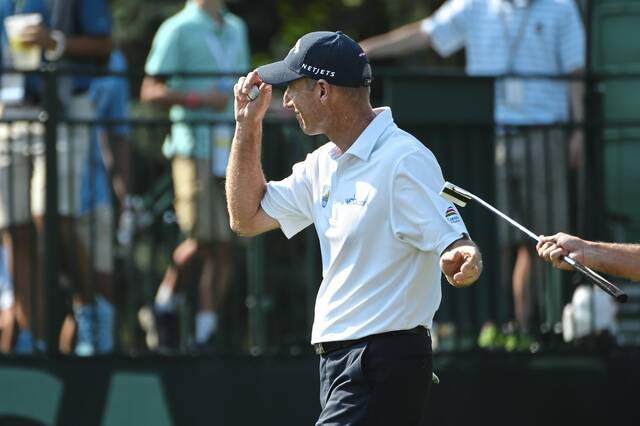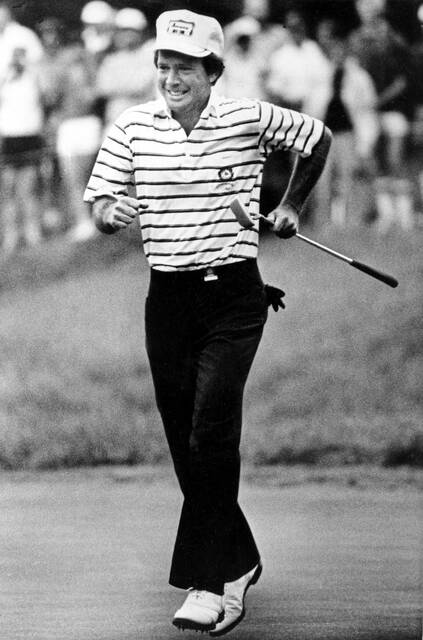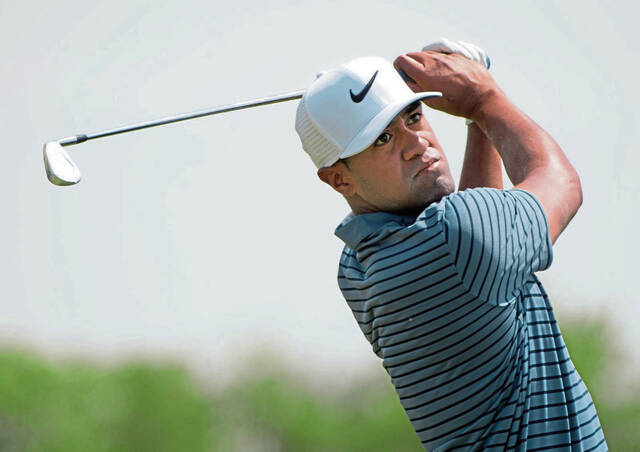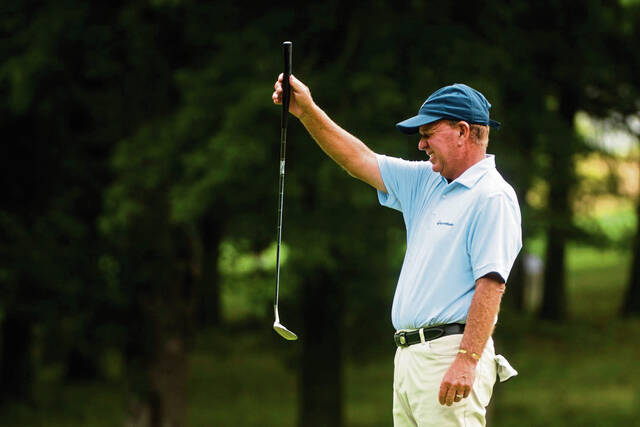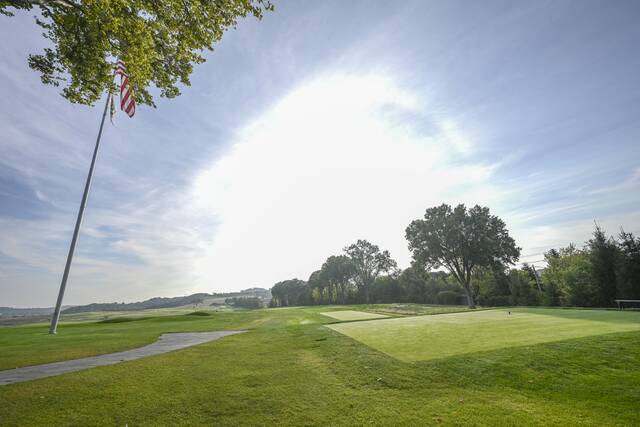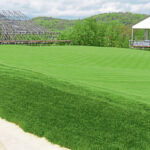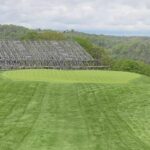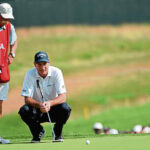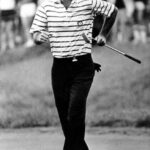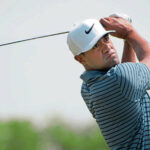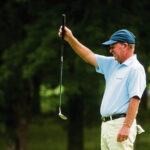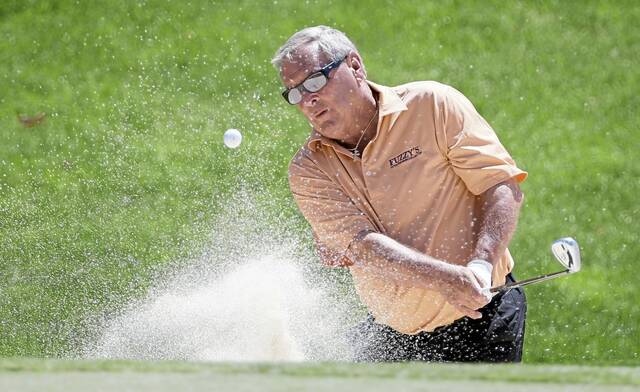From the pristine fairways and lightning-fast greens to the punishing bunkers and club-twisting rough, Oakmont Country Club is one of the toughest tests for even the world’s best golfers, who will descend upon Western Pennsylvania for the 125th U.S. Open from June 12-15.
TribLive is producing a hole-by-hole look at what makes Oakmont Country Club one of the most popular and anticipated stops for the USGA.
Hole 16 breakdown
Length: 236 yards, Par 3
Handicap: 9
2016 U.S. Open stroke average: 3.24
Description
The final par 3 of the inward nine requires a long iron for most players, but it better be accurate. There will be a penalty for being wayward left or right.
A well-placed tee shot can land comfortably on the large green that also offers a false front approach area that allows players to “miss” and avoid the long greenside coffin bunker on the left and deep rough along a small hillside on the right.
A bunker to the right of the green was removed during restoration, but the 5-inch-tall rough that replaced it will be even less forgiving for those trying to chip near the pin.
The green slopes from back to front and left to right and has many breaks, making lag putts quite a challenge. Pin location on this hole, especially, will determine how aggressive players can be.
At the 2016 U.S. Open, the 16th hole saw just 32 birdies while yielding 110 bogeys and 10 double bogeys.
Memorable moment from U.S. Open
Larry Nelson’s 62-foot birdie putt on the 16th hole during the final round of the 1983 U.S. Open helped him secure his second major championship. Knotted in a tie with Tom Watson, Nelson hit a 4-wood onto the green when the hole measured 228 yards and then drained the lengthy putt.
How the locals play it
John Aber, 55, is a regular on the summer circuit around Western Pa. and beyond. The Allegheny Country Club pro and Sewickley resident has experience in PGA Tour events, won the 2021 Tri-State PGA Senior Professional Championship and played in the 2021 U.S. Senior Open in Omaha. He played Oakmont in the fall and took note of the restorations throughout the course.
“The rule there (on No. 16) is that you hit on the front part of the green. You don’t try to get too aggressive there. … They took the front bunker out there on the right. It will be heavy rough there now. The rule of thumb is hit on the front third of the green, make three and move to the next hole.”
Around the U.S. Open
Spotlight
Matt Fitzpatrick
Three years ago, Matt Fitzpatrick raised the 2022 U.S. Open trophy after winning at The Country Club with a score of 6-under-par. The 30-year-old Englishman will try to duplicate that effort next week at Oakmont.
Fitzpatrick has made nine cuts in 10 U.S. Open appearances. He finished 64th last year at Pinehurst with a score of 13-over-par. He also has experience at Oakmont Country Club, where he tied for 54th at 13-over-par when he played in the U.S. Open in 2016.
A 10-time winner as a professional, Fitzpatrick is coming off a 31st-place finish at the Memorial Tournament last week with a score of 5-over. He is 79th in the Official World Golf Ranking this year.
In addition to his U.S. Open in 2022, Fitzpatrick also won the 2013 U.S. Amateur at The Country Club.
He has played on three European Ryder Cup teams and represented England in the 2024 Olympic Games.
By the numbers
17 — Age of the youngest qualifier for the U.S. Open, Mason Howell from Thomasville, Ga.
73.43 — Percentage of fairways hit by Aaron Rai, the leader in 2025 driving accuracy on the PGA Tour
71.40 — Percentage of greens in regulation for Sepp Straka in 2025, the leader on the PGA Tour
Quotable
“I learned it’s the hardest golf course I’ve ever played in my life.”
– Tony Finau, six-time PGA Tour winner on his experience at the 2016 U.S. Open
Oakmont history
Here’s a look at where the U.S. Open will be played in the future:
2026 — Shinnecock Hills Golf Club, Southampton, N.Y.
2027 — Pebble Beach (Calif.) Golf Links
2028 — Winged Foot Golf Club (West Course), Mamaroneck, N.Y.
2029 — Pinehurst Resort & Country Club (Course No. 2), Village of Pinehurst, N.C.
2030 — Merion Golf Club, Ardmore, Pa.
2031 — Riviera Country Club, Pacific Palisades, Calif.
2032 — Pebble Beach
2033 — Oakmont Country Club
2034 — Oakland Hills Country Club, Bloomfield Hills, Mich.
2035 — Pinehurst
2036 — Shinnecock
2037 — Pebble Beach
2038 — The Country Club, Brookline, Mass.
2039 — The Los Angeles Country Club (Calif.)
2040 — Merion Golf Club
2041 — Pinehurst
2042 — Oakmont
2044 — Pebble Beach
2047 — Pinehurst
2049 — Oakmont
2050 — Merion Golf Club
2051 — Oakland Hills C.C. (South Course)
If you missed it
No. 1: U.S. Open hole by hole: No. 1 at Oakmont among world’s toughest opening tests
No. 2: U.S. Open hole by hole: Sloping green among challenges on No. 2 at Oakmont
No. 3: U.S. Open hole by hole: Church Pews a landmark hazard on No. 3 at Oakmont Country Club
No. 4: U.S. Open hole by hole: Birdie opportunity within reach on No. 4 at Oakmont
No. 5: U.S. Open hole by hole: Aggressive play can be rewarded on No. 5 at Oakmont
No. 6: U.S. Open hole by hole: Danger lurks on, around No. 6 green at Oakmont
No. 7: U.S. Open hole by hole: Players will face mental test with club selection on No. 7 at Oakmont
No. 13: U.S. Open hole by hole: A short par 3, Oakmont’s No. 13 is surrounded by sand
No. 15: U.S. Open hole by hole: Piano Keys, massive green among trouble spots on No. 15 at Oakmont



